How to Wire Two Channels to One Speaker (4 Methods)
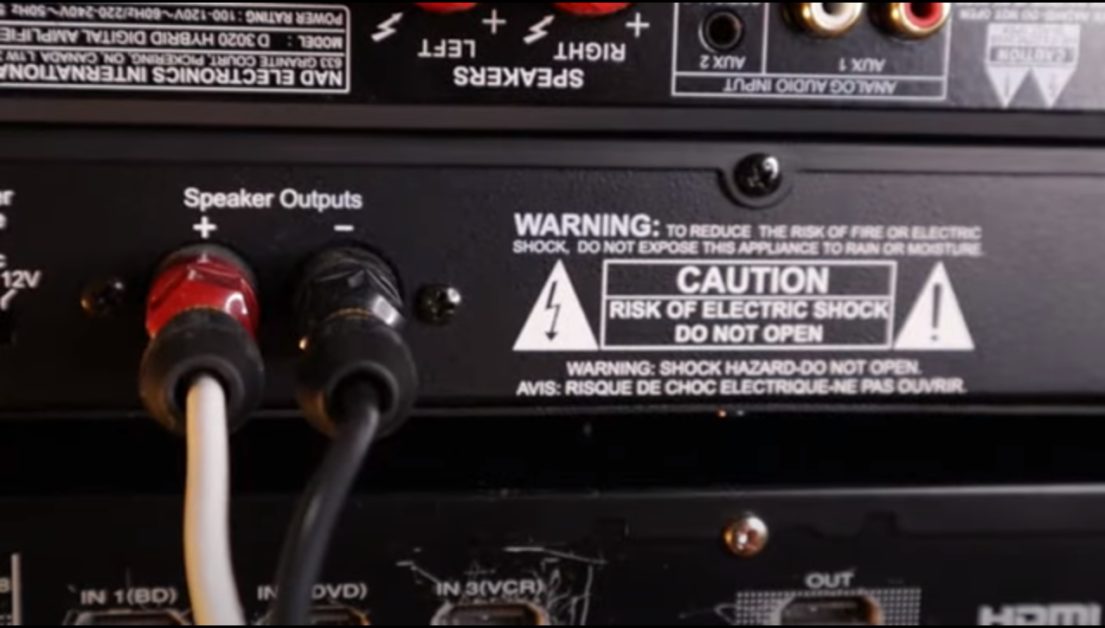
This guide will show you how to wire two channels to one speaker, giving you a more immersive audio experience.
You might find that wiring a single channel to one speaker is straightforward, and this is quite normal, but what if you want to wire two channels instead? You will have to do this if you have only one speaker but two amp channels.
You can wire two channels to one speaker (without damaging your amplifier) by connecting directly (not recommended), using a dual voice coil speaker or a mono switch, or bridging the amplifier.
I will show you how to properly and safely wire two channels to one speaker.
Why Wire Two Channels to One Speaker?
Why would you want to wire two channels to one speaker?
The need to wire two channels to one speaker might arise if you are trying to use a special audio device or if you are an audio technician, sound engineer, or DJ. But why do they do it?
The effect of doing this is that it increases the overall power output going into your speaker. It results in better sound dynamics.
However, it would be best if you took certain precautions.
Precautions
Take the following three precautions to avoid damaging your amplifier:
(1) Check the Impedance. You should check the amplifier’s impedance to know which method is more appropriate. It may lie within the range of 4 ohms to 8 ohms, but check the back of the speaker for this detail, whether it’s manual or online, by looking up the model number.
(2) Wire Properly. You must follow this guide carefully to wire the two channels properly. Otherwise, it is possible for the amplifier to get damaged, although this risk depends on the type of amplifier you have.
(3) Don’t Wire in Parallel. You must avoid connecting the amplifier’s outputs in parallel, as this will likely damage the amplifier. This first method does this because it’s simple, but it’s not usually recommended.
Also, you might be tempted to bridge the one speaker. But combining multiple audio channels is not the right way to wire the channels. You have to contrast the two channels.
The safest way is to follow one of the four methods described below.
Wiring Two Channels to One Speaker
Method 1: Wiring the Two Channels Together
This is a simple method where you directly connect the two (left and right) channels and wire them to the speaker.
To wire the two channels together this way:
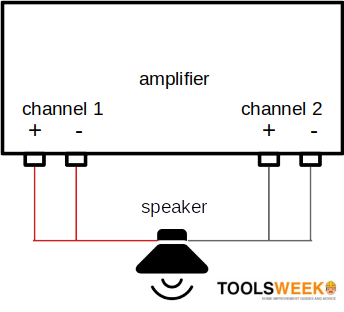
Step 1: Connect Wire to Positive Terminals
Connect a wire to channel 1’s positive terminal and the other to the same for channel 2.
Step 2: Join Wires to Make Them Single
Now join the two wires by winding them together to make them into a single unit.
Step 3: Repeat the Negative Terminals
Repeat the above for the two negative terminals.
Step 4: Join Each Wire to Each Terminal
Finally, join the positive wire to the speaker’s positive terminal and the negative wire to the speaker’s negative terminal.
Effectively, the two channels will function together, and the current level will be the same as for a single channel, but you won’t get the desired improvement in sound quality.
Not only that, but this is the parallel arrangement that I advised against because it could negatively impact the sound quality. The two channels may conflict, leading to the amplifier heating up and ultimately getting damaged.
Method 2: Using a Dual Voice Coil Speaker
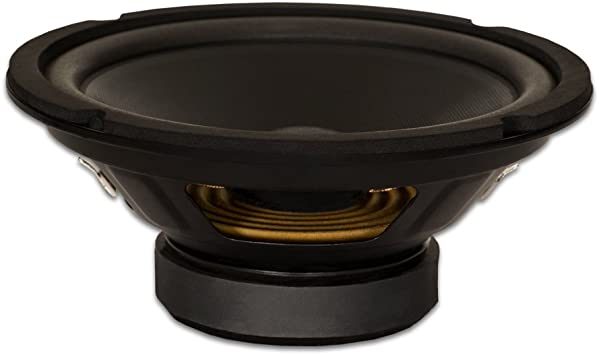
You can use a dual voice coil speaker that has isolated coils.
This will allow each voice coil to handle one channel, so you can output both through the single speaker. This is a common arrangement in subwoofers.
There are several ways to connect dual-coil speakers, but we recommend a parallel-to-parallel arrangement. Here is how you can make it:
Step 1: Connect the Speakers’ Positive Terminals
Connect the speaker’s positive terminals using a speaker wire.
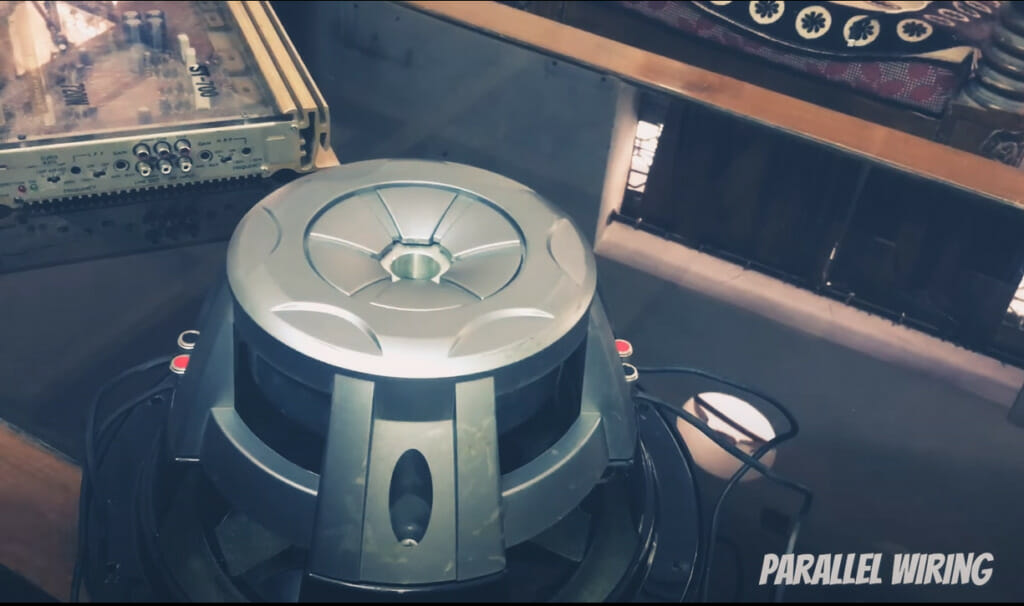
Step 2: Connect the Speakers’ Negative Terminals.
Repeat the above for the two negative terminals.
Step 3: Connect the Amplifier’s Positive Lead
Now connect the amplifier’s positive lead to either one of the two positive terminals of the speaker.
Step 4: Connect the Amplifier’s Negative Lead
Repeat the above step for the negative lead to connect it with one of the speaker’s negative terminals.
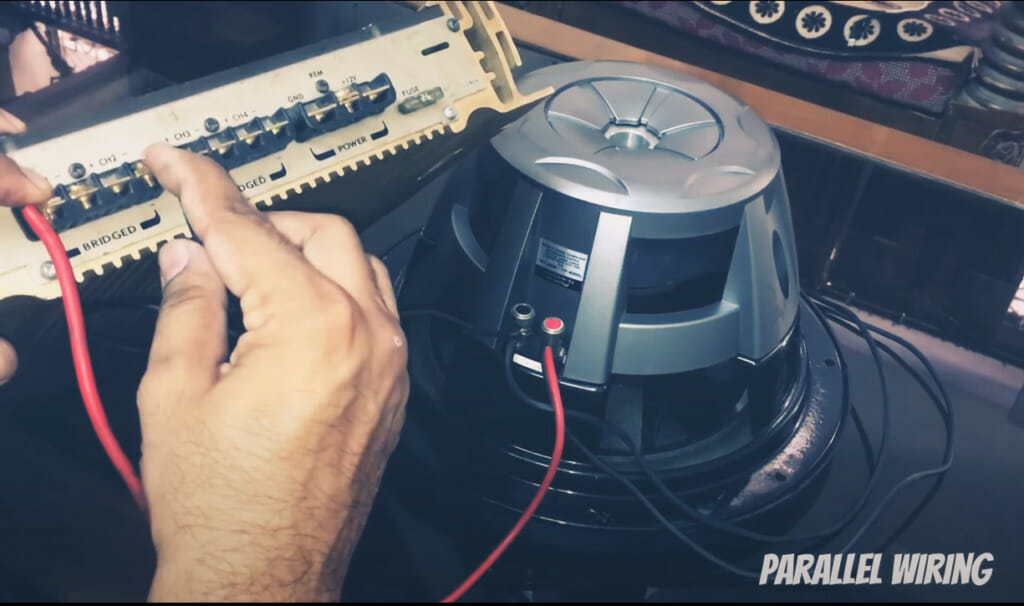
Method 3: Using a Mono Switch
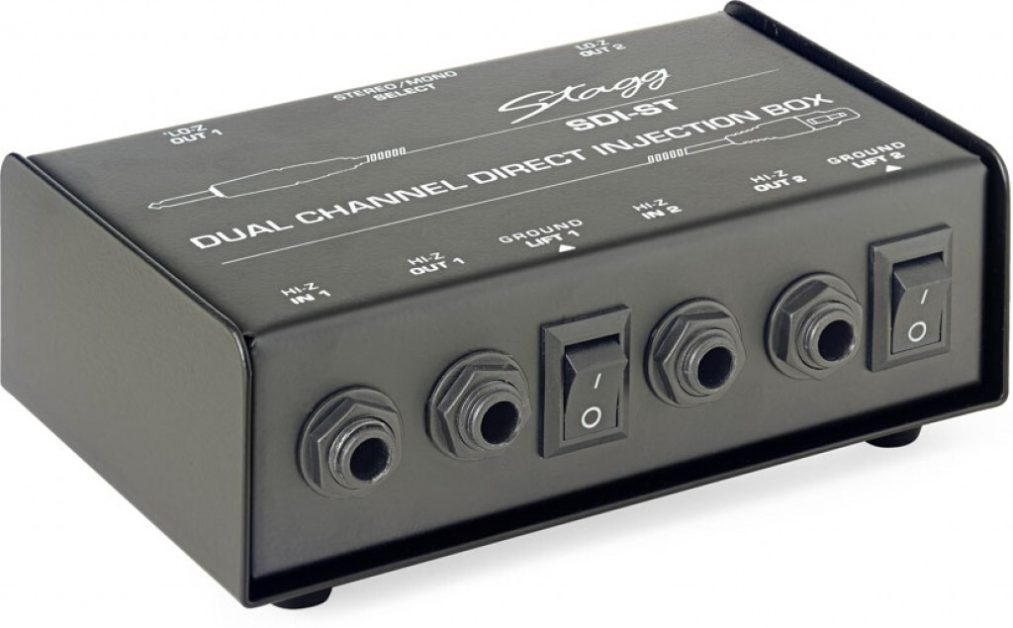
This is also a simple way to wire two channels to one speaker.
This method effectively converts the two-channel amplifier to a monoblock amplifier. You combine the left and right signals and send them simultaneously to the speakers and amplifier. The combined impedance will increase when you add both signals.
Method 4: Bridging the Amplifier
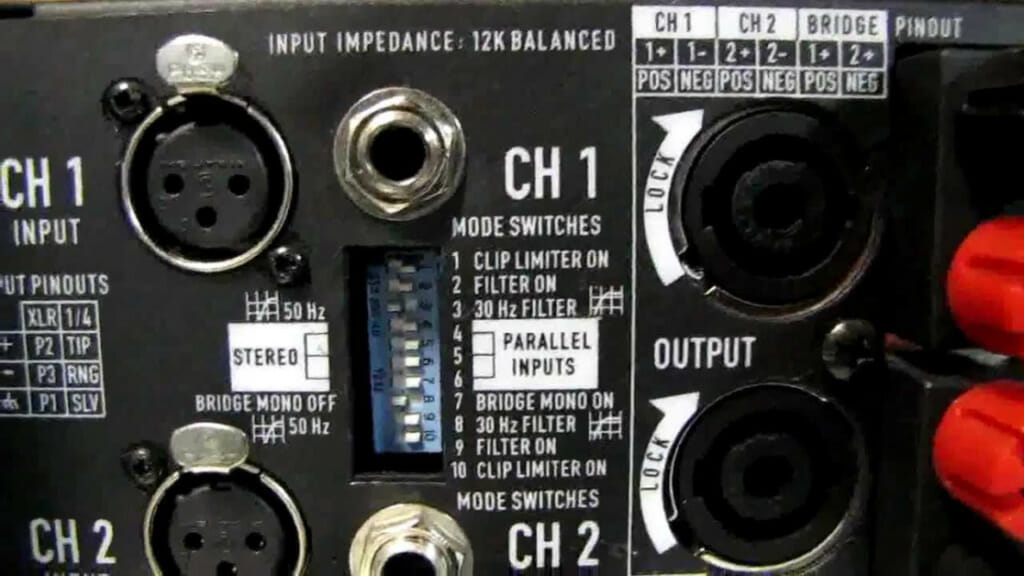
This is a variation of the method using a mono switch because it also involves bridging.
However, the bridging is with an intermediate party connected between both channels. The speaker’s positive terminal is connected to the first channel’s positive terminal.
This method halves the resistance, and the lower resistance will draw more current (and give out more heat). Although ideal for a subwoofer, normal speakers can also be wired this way if the resistance of each is high.
The drawback of this method is the high current draw and heat generated. So, this method is not suitable for all speakers. Also, you can only do this if you are sure the amplifier can handle bridging.
If the amplifier is already bridged internally, don’t use this method. If it isn’t, you can try it, but be wary of the possibly increased current and heat. The ideal amplifiers for this are stereo amplifiers that amplify the left and right channels separately. The method will make it effectively a mono amplifier but one capable of amplifying one of the two channels.
Take a look at some of our related articles below.
- What gauge speaker wire for subwoofer
- How to splice speaker wire
- How to wire speakers with 4 terminals
Video References
stageleftaudio
Red R Entertainment
